International Journal of Agricultural Science and Food Technology
Carbon Paste Electrode Modified with Natural Clay: Electrochemical Study on the Influence of Clay Content for the Detection of Paracetamol and Dopamine
Mohamed Achache*, Ghizlane Elouilali Idrissi, Nordin Ben Seddik, Hajar El Haddaoui, Sanae El-Haddar, Dounia Bouchta, Khalid Draoui and Mohamed Choukairi
Laboratory of Materials Engineering and Sustainable Energy (LMESE), Faculty of Science, Abdelmalek Essaadi University, B.P. 2121, 93002, Tetouan, Morocco
Cite this as
Achache M, Idrissi GE, Seddik NB, El Haddaoui H, El-Haddar S, Bouchta D, et al. Carbon Paste Electrode Modified with Natural Clay: Electrochemical Study on the Influence of Clay Content for the Detection of Paracetamol and Dopamine. Int J Agric Sc Food Technol. 2025;11(2):033-037. Available from: 10.17352/2455-815X.000226Copyright License
© 2025 Achache M, et al. This is an open-access article distributed under the terms of the Creative Commons Attribution License, which permits unrestricted use, distribution, and reproduction in any medium, provided the original author and source are credited.The quantitative and qualitative analysis of pharmaceutical and biological compounds is of growing interest, yet it remains challenging due to the complexity of real sample matrices. Such analysis often requires the simultaneous detection of multiple compounds with high sensitivity and selectivity. In this study, raw Moroccan clay from the Chefchaouen region was used as an additive in different paste matrices for the detection of molecules of biological and environmental importance. Electrochemical techniques, including Cyclic Voltammetry (CV), Differential Pulse Voltammetry (DPV), and Electrochemical Impedance Spectroscopy (EIS), were employed to evaluate the impact of clay incorporation into the composite electrodes. X-ray Diffraction (XRD) analysis revealed the clay contains kaolinite, chlorite, and interstratified illite-smectite, suggesting improved electrochemical performance. An optimal clay content of 3% yielded the highest performance, yielding superior analytical responses compared to other tested proportions. The developed sensor shows strong potential for future use in the simultaneous detection of Paracetamol (PAR) and Dopamine (DA), particularly in real samples such as pharmaceutical tablets and biological fluids like urine.
Introduction
Research on chemically modified electrodes began approximately four decades ago with the work of Lane, Hubbard, Miller, and co-workers [1]. Over the past two decades, the use of these modified electrodes has seen significant growth, particularly in the field of electrocatalysis. Among the developed electrode materials, carbon paste — first introduced by Adams in 1958 [2], occupied a prominent place. This work has led to the continued use of this type of electrode materials in various application areas, including analysis, catalysis, electrocatalysis, and biosensor applications [3,4].
The selective and precise detection of substances requires efficient analytical means, such as chromatographs and various spectrometers. However, these devices have limitations, being complex, expensive, bulky, and sometimes difficult to implement. Therefore, new methods with electroanalytical properties better suited for on-site analysis have emerged. This has led to the development of various sensors for the detection of chemical or biological species in recent years [5]. Among the different types of sensors, electrochemical sensors appear to be an attractive alternative for simple, reliable, rapid, and cost-effective detection [6,7].
Paracetamol (PAR), also known as acetaminophen, is a commonly used analgesic, and anti-inflammatory drug for treating viral/bacterial fevers and relieving mild to moderate pain such as headaches, toothaches, backaches, post-operative pain, as well as pain associated with arthralgia, neuralgia, and cancer [8-10]. Generally, PAR does not have harmful side effects at therapeutic doses. However, high doses, chronic use, or concomitant use with alcohol or other drugs can lead to health problems such as rashes, liver disorders, nephrotoxicity, and pancreatitis [11-13].
DA is the most important catecholamine and a major neurotransmitter produced by the decarboxylation of L-dopa [14]. It plays an essential role in the hormonal, renal, cardiovascular, and central nervous systems of mammals for message transfer [15]. Low levels of DA can lead to various neurological diseases such as Parkinson’s disease, schizophrenia, attention deficit hyperactivity disorder, addiction, and restless legs syndrome [7,16].
In this context, the aim of this work is to develop simple, low-cost, eco-friendly, and efficient electrochemical sensors for the on-site analysis of PAR and DA, using natural clay as an environmentally friendly modifier. XRD analysis was employed to investigate the clay and non-clay fractions of the material. Additionally, CV and EIS techniques were used to characterize the optimized sensor and compare it to an unmodified electrode. Preliminary results indicate that the developed sensor could be used in future experiments to monitor PAR and DA concentrations in real samples such as pharmaceutical tablets and urine.
Experimental
Chemicals
Raw clay was collected from the Rif mountains, located in the north-west of Morocco. High-purity natural graphite, with a particle size (< 20 µm), was purchased from ProGraphite Shop. The chemicals used included potassium dihydrogen phosphate (K2HPO4) with a purity of ≥ 99% and potassium dihydrogen phosphate (KH2PO4) with a purity of ≥ 99%, both sourced from Riedel-de Haen. Paraffin oil (0.86 g cm-1) was also used, while absolute ethanol with a purity of ≥ 99.8% was obtained from VWR Chemicals. Additionally, PAR with a purity of ≥ 99.95%, DA with a purity of ≥ 99.9%, as well as potassium hexacyanoferrate (II) and (III), were purchased from Sigma-Aldrich. Polyvinyl chloride capillary tubes (i.d. 2 ± 0.05 mm) were used as supports for composite electrodes. All experiments were conducted at room temperature and pH 7.0.
Instrumentation and procedures
Voltammetric measurements were performed using a Potentiostat/Galvanostat/ZRA from GAMRY Instruments (Interface 1010T, PA, USA), connected to a desktop computer running Gamry Framework software. The experiments were conducted in a three-electrode cell, in a single compartment of 25 mL. A platinum wire was used as the counter electrode, while a Hg/Hg2Cl2 (3M KCl) reference electrode was used. The working electrodes were made of carbon paste composites. The used clay was characterized by XRD using a Bruker D8 ADVANCE diffractometer, with a 2θ angular range from 5° to 65°, using a Cu Kα radiation source with a wavelength λ = 1.5418 Å. Additionally, EIS measurements were carried out at an open circuit potential of +0.28 V in an aqueous solution containing 0.5 M KCl and an equimolar mixture of K3[Fe(CN)6]/K4[Fe(CN)6]. The impedance data were recorded over a frequency range from 105 Hz to 10-1 Hz with an amplitude of 5 mV.
Procedure for preparing carbon paste electrodes
The CPE-Clay composite was prepared by carefully hand-mixing a quantity of graphite/clay powder mixture with an appropriate amount of paraffin oil in an agate mortar using a pestle to achieve a homogeneous mixture [6]. This mixture was then inserted into a cylindrical plastic tube. To establish electrical contact with the external circuit, a copper wire was inserted into the paste and securely positioned. The composite electrodes, whether unmodified or modified by natural clay (CPE-Clay), were then rinsed with ethanol and distilled water. Finally, the electrode surfaces were electrochemically cleaned by applying a number of successive cycles of CV in the potential range of -1 V to +1 V until stable and similar voltammograms were obtained (Figure 1).
Results and discussion
Clay’s characterization
XRD analysis was performed to identify the mineralogical phases present in the raw clay. The XRD pattern shown in Figure 2 reveals several characteristic diffraction peaks. A reflection attributed to chlorite (JCPDS 00-016-362) appears around 2θ = 6.03° (d001 = 14.66 Å), partially overlapping with other reflections. Additionally, distinct reflections associated with kaolinite (JCPDS 00-005-0143), illite (JCPDS 00-083-1808), and smectite are observed [17]. The presence of interstratified illite-smectite (I-S) phases is also confirmed by reflections near 5 Å [18]. Moreover, non-clay mineral peaks, notably those corresponding to quartz, are identified at 4.27 Å and 3.33 Å. These findings indicate that the clay is primarily composed of clay minerals such as chlorite, kaolinite, and predominantly interstratified illite-smectite, as well as non-complex mineral composition may account for the enhanced electrochemical performance observed after modification.
Effect of the clay percentage on the detection of PAR
During the preparation of modified electrodes, one of the primary parameters to be optimized is the clay percentage of clay incorporated into the final mixture [19]. To evaluate its influence on the electrochemical response different clay loadings (1%, 2%, 3%, 7%, 10%, 15%, and 20% by weight) were added to the carbon paste.
The electrochemical performance of the modified carbon paste electrodes was assessed using DPV with 100 µM PAR in a phosphate buffer solution (PBS) at pH 7.0. Among the tested compositions, the electrode containing 3% clay exhibited the most favorable electrochemical response, as evidenced by the highest peak current. The highest peak height was observed with a clay percentage of 3% (Figure 3A). This enhancement is attributed to an increase in the number of active sites and more efficient electron transfer. Furthermore, an improved electrode transfer process is indicated by a shift in the peak potential toward more negative values (Ep (CPE-Clay) = 0.361 V) compared to the unmodified electrode (Ep (CPE) = 0.455 V), confirming the superior performance of the modified materials for PAR detection.
However, as shown in Figure 3B, the peak current remains nearly unchanged for low clay contents (1% and 2%) and progressively decreases as the clay percentage increases beyond 3%. This decline likely results from a reduced electroactive surface area, caused by a decrease in surface roughness and conductive carbon content, thereby lowering the overall conductivity of the electrode.
Electrochemical behavior of PAR and DA
The electrochemical behavior of PAR and DA was investigated using the CPE modified with 3% Clay (CPE-Clay 3%) by CV. Figure (4A and 4B) display the voltammograms recorded with the unmodified CPE and the CPE-Clay sensors in 0.1 M PBS (pH = 7.0), in the presence of 10-4 M of PAR and 10-5 M of DA respectively.
For PAR (Figure 4A), both oxidation and reduction peak currents were significantly enhanced on the CPE-Clay sensor compared to the unmodified CPE. The Ipa/Ipc ratio decreased from 3.8 (CPE) to 1.8 (CPE-Clay), indicating improved electron transfer kinetics. Table 1 summarizes the anodic and cathodic peak currents and potentials (Ipa, Ipc, Epa, and Epc), along with the peak-to-peak separation (ΔEp) for PAR at different clay loadings.
The unmodified CPE exhibited a quasi-reversible redox process with a ΔEp of 0.572 V, reflecting slow electron transfer. Upon modification with 3% clay, a notable enhancement was observed, with a reduced ΔEp of 0.216 V and an increase in oxidation current by approximately 36% compared to the bare electrode.
The optimized CPE-Clay 3% sensor was further evaluated for DA detection. Figures 4B and 5A show the CV and DPV responses respectively. As seen in Figure 4B, the modified electrode exhibits a well-defined, reversible redox behavior for DA, while the unmodified CPE shows a significantly reduced electrochemical response. The DPV results (Figure 5A) show a marked improvement in oxidation peak intensity for DA with the clay-modified sensor.
Selectivity was assessed by testing the simultaneous detection of PAR and DA in the same solution. The electrochemical response in the same solution. As shown in Figure 5B, the CPE-Clay sensor allows clear separation of the two oxidation peaks, located at 0.173 V for DA and 0.427 V for PCT, with a peak separation of 0.254 V In contrast, the unmodified CPE produced less intense and less resolved signals, shifted toward more positive potentials. These results highlight the capability of the CPE-Clay sensor to simultaneously detect DA and PAR with good sensitivity and selectivity, supporting its potential use in real-sample analysis.
Electrochemical characterization of CPE-clay
CV and EIS techniques are commonly used to study various aspects of electrode behavior in the presence of an analyte. to evaluate the electrocatalytic influence of clay incorporation in the carbon matrix, experiments were conducted in a potassium ferrocyanide system (K4Fe(CN)6) with a concentration of 5 mM, using a KCl solution as the supporting electrolyte. Figure 6A shows the electrochemical characteristics of CPE and CPE-Clay electrodes in the potential range of -0.3 V to +0.7 V at a scan rate of 0.01 V/s. Both oxidation and reduction currents increased in the presence of clay at the surface of the modified electrode, indicating that electron transfer is faster at the CPE-Clay electrode, in addition, this electrode is more conductive than the unmodified CPE electrode. Furthermore, the peak separation potentials ΔEp were 0.100 V for CPE and 0.085 V for CPE-Clay. These results confirm the electrocatalytic effect of clay and a faster electron transfer kinetics for the CPE-Clay electrode compared to the CPE electrode.
To determine the electroactive surface areas of the electrodes, Randles-Sevcik equation (Eq. 1) was used, and scan rates were performed ranging from 0.01 V s-1 to 0.2 V s-1. The equation used is as follows [20].
where Ipa is the peak current, n is the number of electrons involved in the electrochemical reaction (in this case, n = 1), C is the concentration of the redox probe, D is the diffusion coefficient for a ferrocyanide/potassium chloride system (6.5 × 10-6 cm2 s-1), ν is the scan rate, and A is the electroactive area.
The effective electrode surface area for the CPE-Clay electrode is approximately 50% larger than the surface area of the unmodified CPE electrode. These results are consistent with previously reported studies for a similar unmodified composite.
In order to characterize the electrochemical behavior of both the unmodified and the modified CPE with the raw clay, Nyquist plots were recorded and are shown in Figure 6B. both samples exhibited similar electrochemical mechanisms, as the plots show a depressed semicircle (due to the nonideality of the system used) at high frequencies, followed by a diffusion process, which is modeled by a linear portion (Warburg diffusion) that occurs at medium to low frequencies. The electrode modification aimed to reduce the charge transfer resistance (Rct), as evidenced by the smaller semicircle diameter in the Nyquist plot. Specifically, the Rct decreased from 89.5 Ω cm2 for the unmodified CPE to 31.8 Ω cm2 for the CPE-Clay sensor, indicating a significant improvement in conductivity and electron transfer kinetics.
Conclusion
The electrochemical behavior of PAR was studied on the CPE-Clay electrode using electrochemical measurements, including CV and DPV, performed in a phosphate buffer. The electrochemical characterization of the electrode was conducted using a ferrocyanide solution. The incorporation of clay into the carbon matrix improved electron transfer compared to unmodified electrodes for PAR and DA. The addition of clay increased the effective surface area of the electrode, leading to a decrease in polarization resistance. These results demonstrate the practical feasibility of a low-cost, clay-modified electrode for the electrochemical analysis of PAR and DA, enabling their quantification in biological fluids and pharmaceutical formulations, as well as for water quality monitoring.
- Snell K, Keenan A. Surface modified electrodes. Chem Soc Rev. 1979;8(2):259-82. Available from: https://pubs.rsc.org/en/content/articlelanding/1979/cs/cs9790800259
- Adams RN. Carbon paste electrodes. Anal Chem. 1958;30(9):1576. Available from: https://doi.org/10.1021/ac60141a600
- Sierra-Padilla A, López-Iglesias D, Calatayud-Macías P, García-Guzmán JJ, Palacios-Santander JM, Cubillana-Aguilera L. Incorporation of carbon black into a sonogel matrix: improving antifouling properties of a conducting polymer ceramic nanocomposite. Microchim Acta. 2023;190(5):168. Available from: https://link.springer.com/article/10.1007/s00604-023-05740-z
- Achache M, Bouchta D, Draoui K, Choukairi M. Synthesis, physicochemical and electrochemical characterization of graphene oxide nanosheets obtained through improved and modified Hummers methods. Inorg Chem Commun. 2025;174:114120. Available from: http://dx.doi.org/10.1016/j.inoche.2025.114120
- Achache M, García-Guzmán JJ, Seddik NB, Cubillana-Aguilera L, Palacios-Santander JM, Bouchta D, et al. A novel sonogel-Leucine electrochemical sensor for the detection of neuroblastoma biomarker in human urine and synthetic cerebrospinal fluid. Talanta. 2025;286:127452. Available from: https://doi.org/10.1016/j.talanta.2024.127452
- Choukairi M, Bouchta D, Bounab L, González‐Romero E, Achache M, Draoui K, et al. A Carbon Paste Electrode Modified by Bentonite and l‐Cysteine for Simultaneous Determination of Ascorbic and Uric Acids: Application in Biological Fluids. ChemistryOpen. 2023;12(2):e202200201. Available from: https://doi.org/10.1002/open.202200201
- Atyah MB, Bounab L, Choukairi M, El Khamlichi R, Bouchta D, Chaouket F, et al. Selective and sensitive detection of dopamine in the presence of ascorbic acid and uric acid at a Sonogel-Carbon L-Histidine modified electrode. J Mater Environ Sci. 2018;9:66-76. Available from: https://doi.org/10.26872/jmes.2018.9.1.8
- Wan Q, Wang X, Yu F, Wang X, Yang N. Poly (taurine)/MWNT-modified glassy carbon electrodes for the detection of acetaminophen. J Appl Electrochem. 2009;39:785-90. Available from: https://doi.org/10.1007/s10800-008-9721-1
- Ghadimi H, Tehrani RM, Ali ASM, Mohamed N, Ab Ghani S. Sensitive voltammetric determination of paracetamol by poly (4-vinylpyridine)/multiwalled carbon nanotubes modified glassy carbon electrode. Anal Chim Acta. 2013;765:70-6. Available from: https://doi.org/10.1016/j.aca.2012.12.039
- Achache M, Elouilali Idrissi G, Chraka A, Ben Seddik N, Draoui K, Bouchta D, et al. Detection of paracetamol by a montmorillonite-modified carbon paste sensor: A study combining MC simulation, DFT computation and electrochemical investigations. Talanta. 2024;274:126027. Available from: https://doi.org/10.1016/j.talanta.2024.126027
- Lourenção BC, Medeiros RA, Rocha-Filho RC, Mazo LH, Fatibello-Filho O. Simultaneous voltammetric determination of paracetamol and caffeine in pharmaceutical formulations using a boron-doped diamond electrode. Talanta. 2009;78(3):748-52. Available from: https://doi.org/10.1016/j.talanta.2008.12.040
- Olaleye MT, Rocha BJ. Acetaminophen-induced liver damage in mice: effects of some medicinal plants on the oxidative defense system. Exp Toxicol Pathol. 2008;59(5):319-27. Available from: https://doi.org/10.1016/j.etp.2007.10.003
- Achache M, García-Guzmán JJ, Seddik NB, Cubillana-Aguilera L, Palacios-Santander JM, Bouchta D, et al. Voltammetric detection of paracetamol using a novel Sonogel-Carbon material modified with monocalcium phosphate: An experimental and theoretical approach. Diam Relat Mater. 2025;154:112141. Available from: https://doi.org/10.1016/j.diamond.2025.112141
- Bouhouti HE, Rodriguez IN, de Cisneros JHH, Temsamani K, Choukairi M, Bouchta D. A Sonogel/L‐Cystein and a SAM L‐Cystein Modified Electrodes for Detection of Dopamine. Macromol Symp. 2008;118-24. Available from: http://dx.doi.org/10.1002/masy.200851317
- Izaoumen N, Cubillana-Aguilera LM, Naranjo-Rodríguez I, de Cisneros JLH-H, Bouchta D, Temsamani KR, et al. β-Sonogel-Carbon electrodes: A new alternative for the electrochemical determination of catecholamines. Talanta. 2009;78(2):370-6. Available from: https://doi.org/10.1016/j.talanta.2008.11.027
- Achache M, Elouilali Idrissi G, Ben Seddik N, El Boumlasy S, Kouda I, Raissouni I, et al. Innovative use of shrimp shell powder in carbon paste electrode for the electrochemical detection of dopamine and paracetamol: Valorization, characterization and application. Microchem J. 2024;202:110754. Available from: https://doi.org/10.1016/j.microc.2024.110754
- Ben Seddik N, Raissouni I, Draoui K, Aghzzaf AA, Chraka A, Tazi S, et al. Highlighting performances of lanthanum-intercalated stevensite and the commercially available triphosphate aluminium (TPA) as anticorrosive pigments for brass in 3 % NaCl solution: Electrochemical and morphological study. Prog Org Coat. 2020;147:105837. Available from: https://doi.org/10.1016/j.porgcoat.2020.105837
- Ben Seddik N, Chraka A, Zarki Y, Oulad Idriss H, Rami S, Janoub F, et al. Reinforcement of an alkyd resin coating incorporating a swelling clay encapsulated with L-cysteine molecules: Characterization and corrosion inhibition of Cu-36Zn alloy. J Alloys Compd. 2023;960:171052. Available from: https://doi.org/10.1016/j.jallcom.2023.171052
- Gharous M, Bounab L, Pereira FJ, Choukairi M, López R, Aller AJ. Electrochemical Kinetics and Detection of Paracetamol by Stevensite-Modified Carbon Paste Electrode in Biological Fluids and Pharmaceutical Formulations. Int J Mol Sci. 2023;24(14):11269. Available from: https://doi.org/10.3390/ijms241411269
- El Khamlichi R, Bouchta D, Anouar EH, Atia MB, Attar A, et al. A novel l-leucine modified Sol-Gel-Carbon electrode for simultaneous electrochemical detection of homovanillic acid, dopamine and uric acid in neuroblastoma diagnosis. Mater Sci Eng C. 2017;71:870-8. Available from: https://doi.org/10.1016/j.msec.2016.10.076
Article Alerts
Subscribe to our articles alerts and stay tuned.
 This work is licensed under a Creative Commons Attribution 4.0 International License.
This work is licensed under a Creative Commons Attribution 4.0 International License.
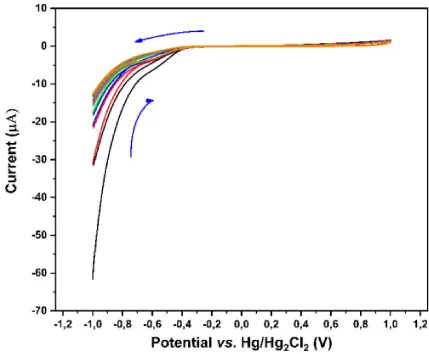
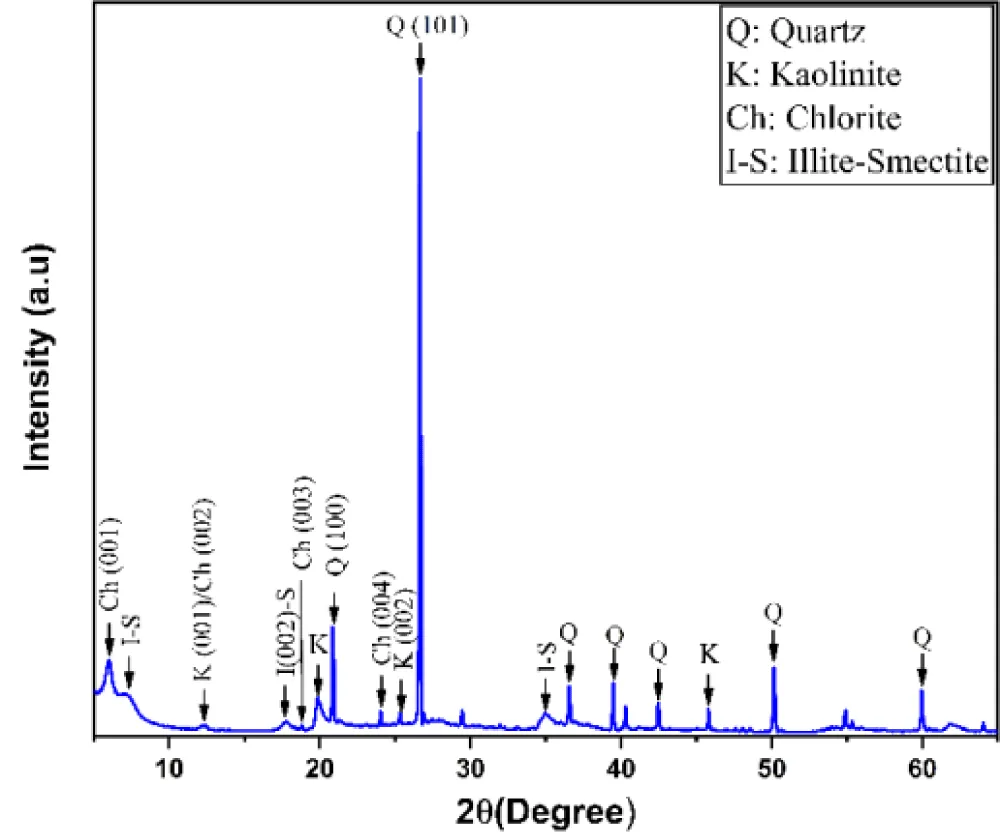
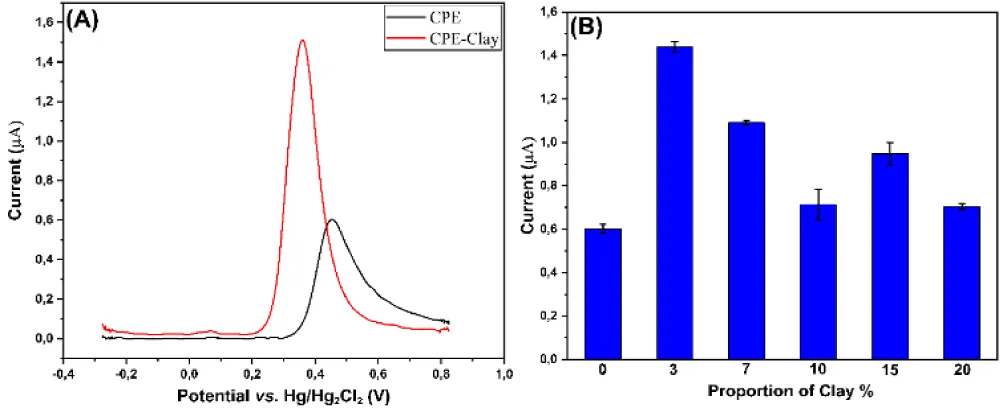
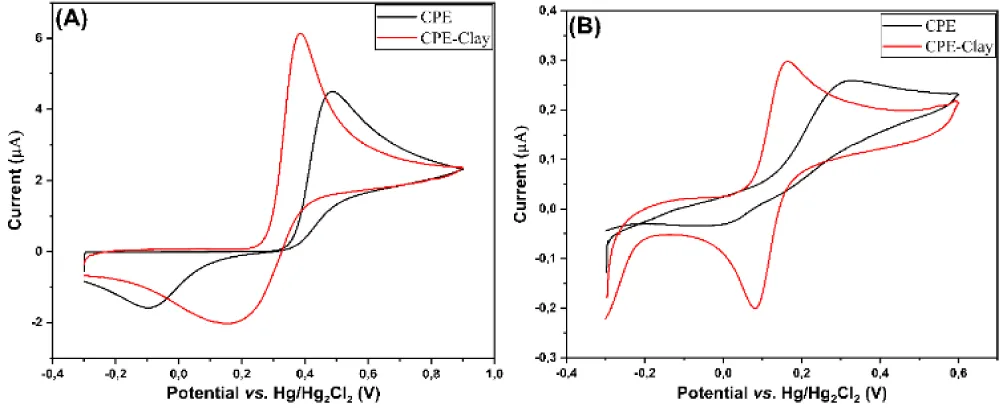
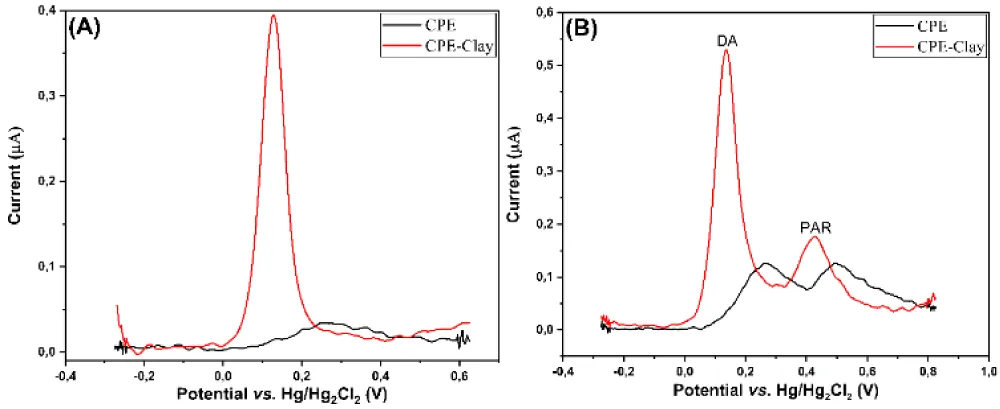
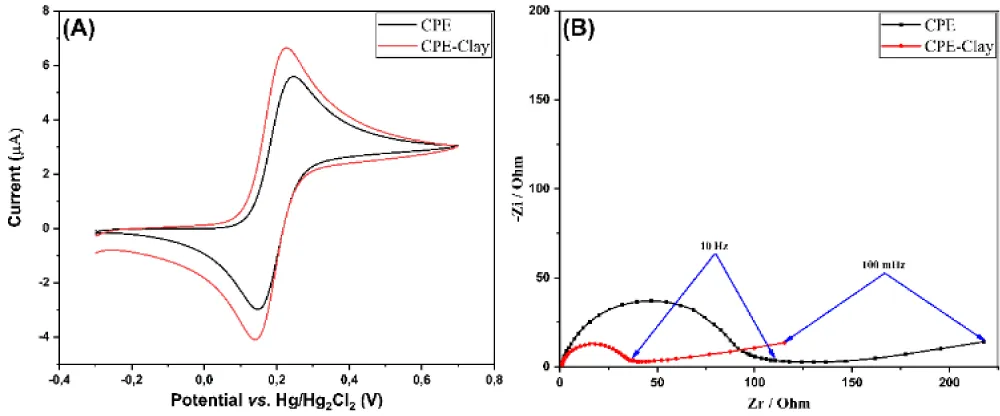


 Save to Mendeley
Save to Mendeley
